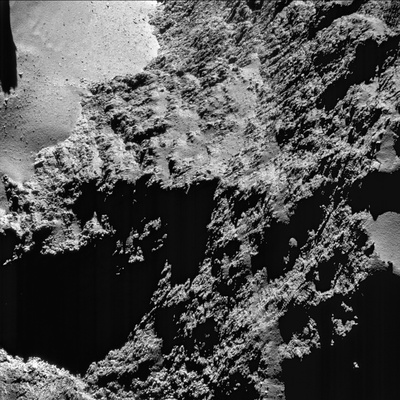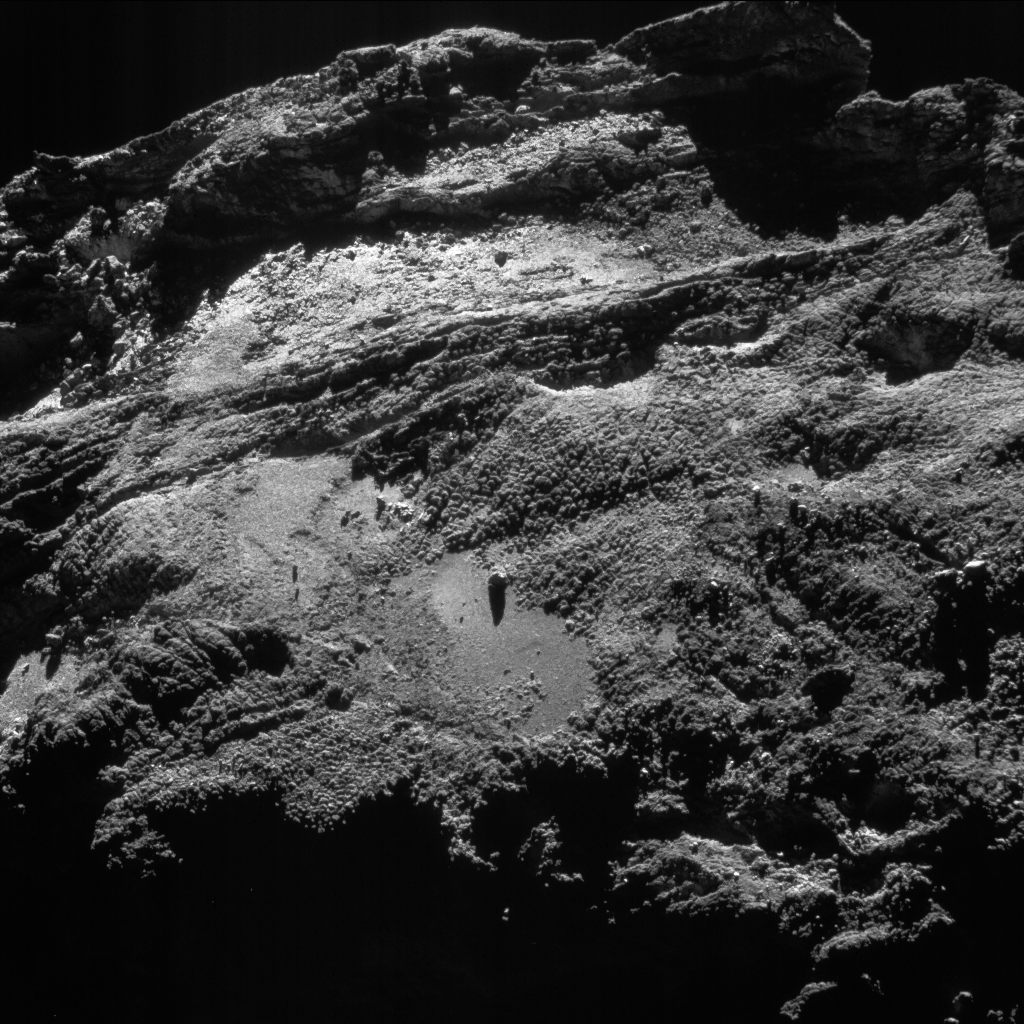CometWatch – 31 August & 11 September
The 31 August image provides a dramatic view on the steep slopes of the Hathor region, on the small comet lobe. Hathor consists of a 900-m high cliff sloping down towards the comet's neck, and is characterised by marked linear features, streaks and even small terraces.
A hint of the dust-covered Ma'at region can be seen towards the right edge of the frame; Rosetta's landing site, on Ma'at, is beyond the right frame of the image.
In the top left corner, a portion of the smooth terrains of Hapi is also visible: located on the comet's neck, Hapi is covered in dusty material and punctuated with boulders.
Enhanced NAVCAM image of Comet 67P/C-G taken on 11 September 2016, 9.8 km from the nucleus. The scale is 0.8 m/pixel and the image measures 900 m across. Credits: ESA/Rosetta/NAVCAM – CC BY-SA IGO 3.0
The 11 September image, instead, portrays a piece of the Wosret region, on the opposite side of the small comet lobe with respect to Hathor. The location where the lander Philae was recently found is not far away, beyond the right edge of the image.
This view reveals the great variety of terrains on the overall flat Wosret region, with some patches of smooth material (just below and left of the image centre) and a multitude of fractures and other linear features crossing the surface.
Meanwhile, 264 NAVCAM images covering the period 27 July to 9 August 2016 were released earlier this week and are now available in the Archive Image Browser.

